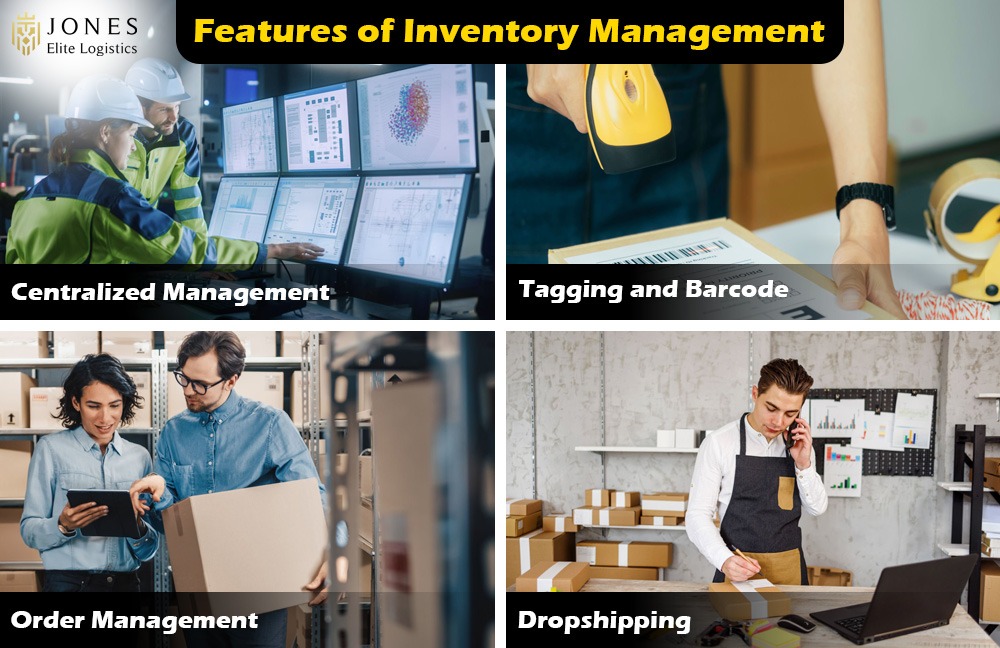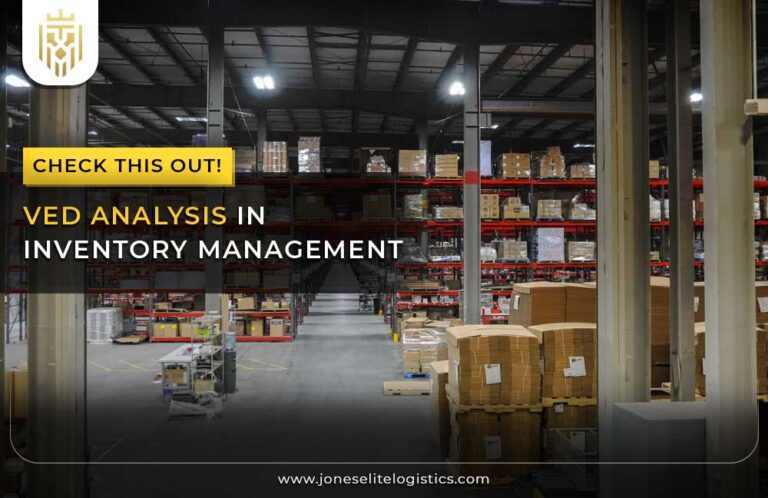What is Inventory Management?
Inventory management is the process that oversees a company’s products from raw materials to final sale, ensuring the right goods are available at the right time. Understanding the inventory management definition helps businesses meet customer demands, reduce costs, avoid supply issues, and maintain profitability.
Features of Inventory Management:
Features of Inventory Management include centralized tracking for efficiency, real-time visibility, automated reorder alerts, unique tagging and barcoding for accuracy, streamlined order management, and integration with inventory management software to enhance operational effectiveness.

Centralized:
Centralized inventory management systems improve efficiency through real-time visibility and a single database for tracking inventory. This feature enables reorder alerts and accurate inventory valuation, simplifying processes and minimizing stock discrepancies.
Tagging and Barcode:
Inventory management techniques like tagging and barcoding enhance inventory accuracy and efficiency by assigning unique identifiers to items. These methods allow for automated counting and real-time updates, ultimately improving order fulfilment and customer satisfaction.
Order Management:
Order management integrates tracking, capturing, and fulfilling customer orders within inventory management systems. This involves inventory control, automated sales processes, and real-time visibility, streamlining operations and enhancing the overall customer experience.
Dropshipping:
Dropshipping allows sellers to fulfil customer orders without holding inventory, passing orders to third parties for direct shipping. This model minimizes capital investment and overhead costs while leveraging automation for efficient inventory management.
What are the Types of Inventory Management?

The types of inventory management include various strategies such as manual systems, periodic counting, just-in-time strategies, economic order quantity techniques, and more. These types of inventory management systems help businesses adapt to their specific needs and optimize their operations.
Manual Inventory Management System:
The manual inventory management system relies on basic approaches like spreadsheets, making it suitable for small businesses with low inventory volumes. While this system is simple, it lacks the capabilities of more advanced inventory management software.
Periodic Inventory Management:
Periodic inventory management involves regular physical counts at set intervals, often using simple technologies for tracking. This method is commonly adopted by smaller businesses and public sector entities for efficient inventory oversight and to understand what are the different types of inventory management systems.
Just-in-Time (JIT) Inventory Management:
Just-in-time (JIT) inventory management keeps minimal stock on hand, allowing businesses to reorder products as they sell. This technique reduces waste and storage costs, aligning inventory closely with sales demand while demonstrating inventory management techniques.
Economic Order Quantity (EOQ) Inventory Management:
Economic order quantity (EOQ) is an inventory management technique that determines the optimal inventory purchase level. This approach balances demand while minimizing holding costs, though it assumes constant product demand, limiting its applicability in fluctuating markets.
Material Requirements Planning (MRP) Inventory System:
Material Requirements Planning (MRP) is a computerized system that integrates data across business areas to optimize material scheduling. MRP helps prevent stock-outs and unnecessary excess, forecasting demand based on historical trends within various types of supply chain management in inventory management.
Barcode Tracking:
Barcode tracking utilizes barcodes or QR codes to manage inventory levels reliably. This inventory management system automates processes and improves efficiency, enabling businesses to scan items and maintain accurate stock counts easily.
RFID:
RFID technology uses radio waves to track inventory through passive and active tags. This method enhances inventory management efficiency by providing real-time tracking of items, streamlining operations, and reducing manual errors.
Bulk Shipment:
Bulk shipment involves purchasing and transporting goods in large quantities to lower costs. Ideal for high-demand, long-shelf-life products, this method can lead to challenges when demand fluctuates, highlighting the need for strategic inventory management systems.
Perpetual Inventory System:
A perpetual inventory system continuously updates inventory records electronically, starting with a physical count and reflecting ongoing transactions. This approach provides real-time insights and integrates with other business systems, improving operational efficiency and facilitating learning to learn inventory management effectively.
FAQs
-
What is Manual inventory management system?
A manual inventory management system uses basic tools like spreadsheets for tracking inventory, making it suitable for small businesses with low stock volumes, but it lacks advanced features of automated systems.
-
What is Material Requirements Planning (MRP) Inventory System?
The MRP inventory system integrates data across various business functions to optimize material scheduling, ensuring adequate stock levels while preventing shortages and excess inventory based on demand forecasts.
-
What is Periodic Inventory Management?
Periodic inventory management involves regularly counting stock at specified intervals, typically using simple technologies, making it suitable for smaller businesses or public sectors to maintain accurate inventory records.
-
What is Economic Order Quantity (EOQ) Inventory Management?
EOQ is an inventory management technique that determines the ideal order quantity to minimize total inventory costs while balancing supply and demand, assuming constant demand for products over time.








